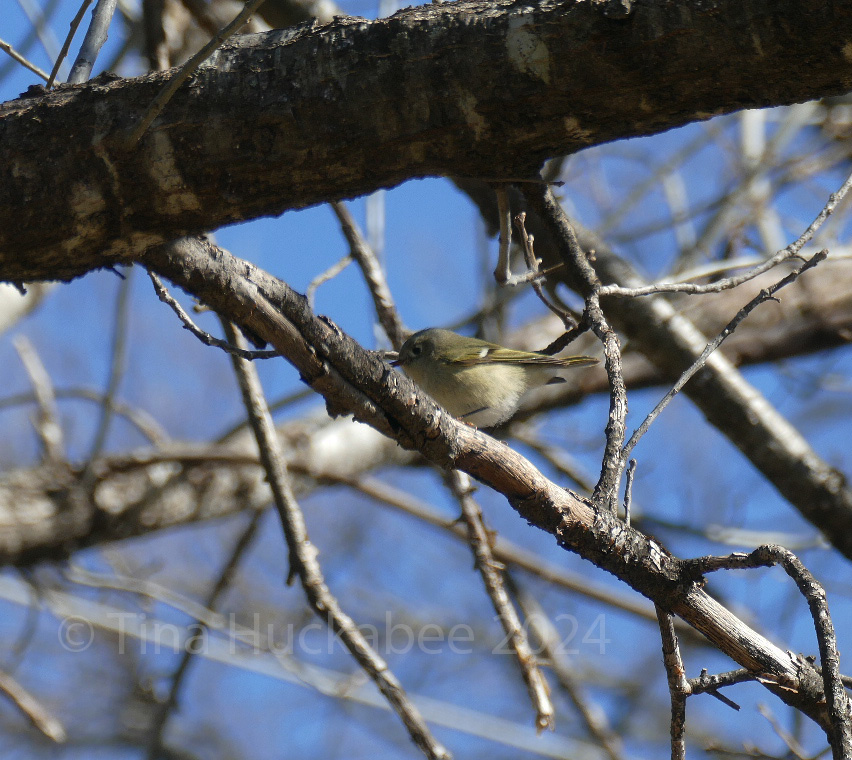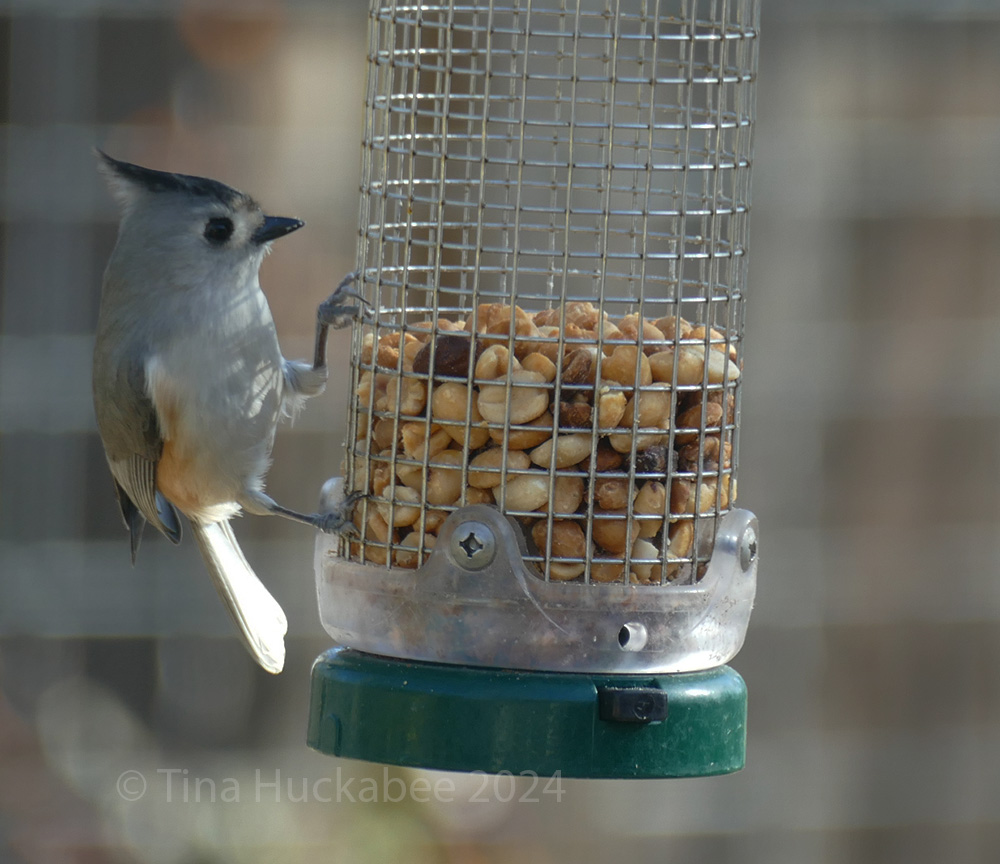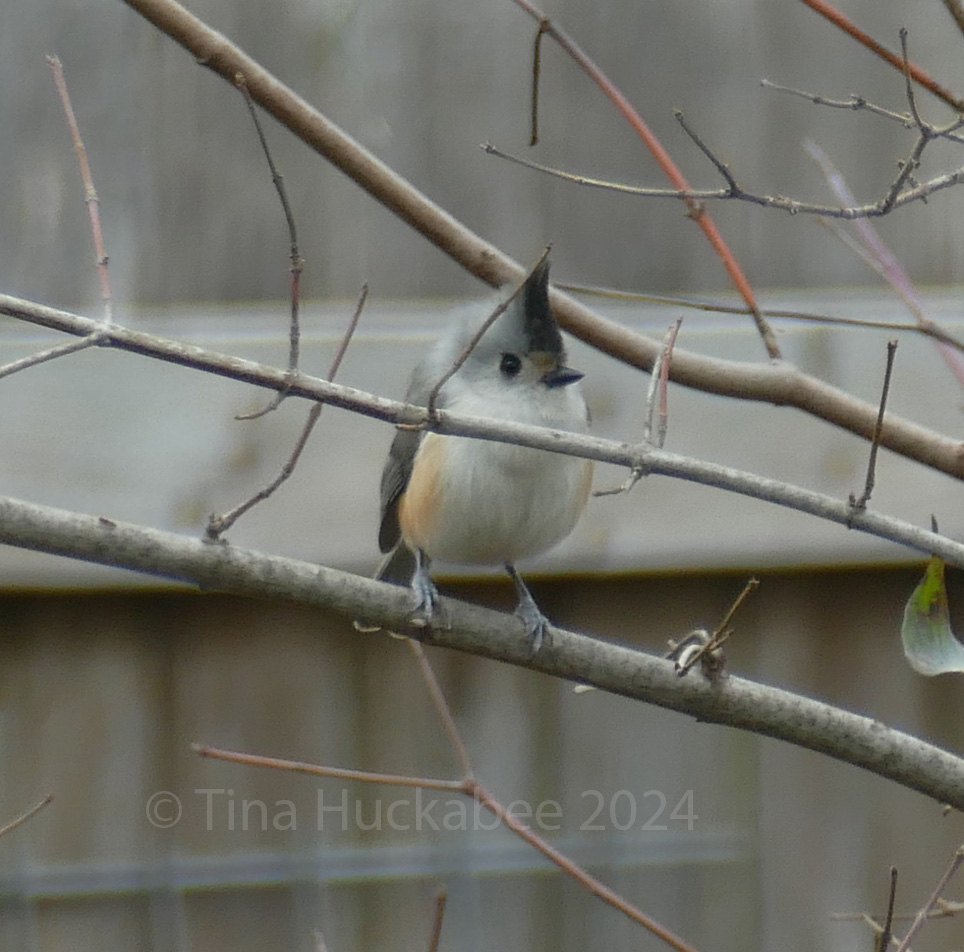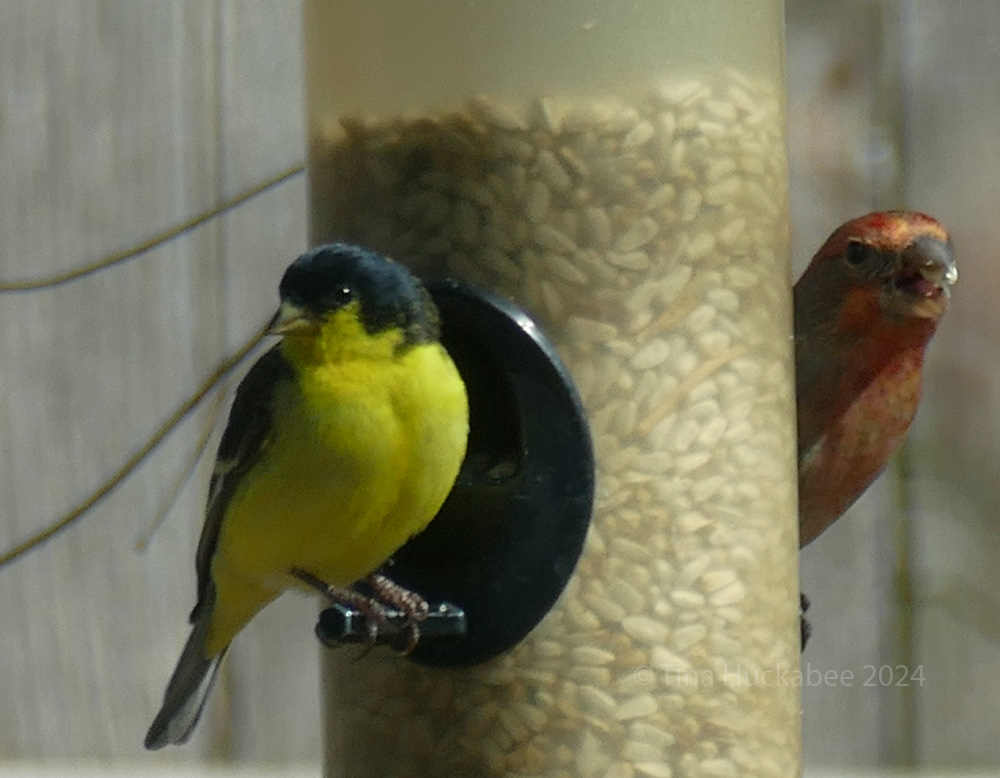Throughout the seasons, it’s fun and educational to watch backyard birds. Winter-to-late spring brings a wider variety of feathered friends and with each day marching toward spring breeding season, avian activity ramps up. Over-wintering, migratory birds have settled in, as much as they will do, until their need to breed becomes so demanding that the birds set forth northward to their nesting sites.
This season there are at least three Orange-crowned Warblers, Leiothlypis celata, visiting my garden each day. Sometimes, all three are perched in bare shrubs and trees, sometimes they’re chasing one another, and sometimes one–or all three–are at the feeders, gobbling up the good stuff.
I’m not sure whether this cutey is a male or female; it never turned just so, to allow me a good enough look at a possible masculine orange dab atop its little head. But it ate contentedly, the seed cylinder being a popular spot for many birds, including all three of the Orange-crowned Warblers.

So far this winter, only one female Yellow-rumped Warbler, Setophaga coronata, has visited the garden. She likes peanuts and the offerings from the seed cylinder,

…but she also forages along the ground. The yellow rump has not presented itself for a decent photo, but stay tuned, because at some point I’ll get a chance to document that butter butt.

This Ruby-crowned Kinglet, Corthylio calendula, bopped along the bare limb of one of the Red Oak trees, pausing just long enough for me to snag a shot. These are tiny, flitty birds, which I see only in winter. They don’t visit feeders often, but enjoy nibbling small insects on trees and shrubs. Males sport a truly ruby-red tuft of feathers which they’ll show when flirting with females or mansplaining to other males. I don’t know if this one is a male, its ruby feathers weren’t visible. The kinglet’s tiny size and wing bars, not to mention its endearing face, are other reliable identifiers of this bird.

Red-winged Blackbirds, Agelaius phoeniceus, are spring to early summer visitors, but a crew with a couple of males and several females have been hanging around the garden. This attractive female sat still for a moment, taking a break from her meal of seeds and nuts.

White-winged Doves are ubiquitous in Austin’s urban settings, including my garden. They’re here. Lots of them. Year-round. Maybe because they’re so common, I’m not interested in them, but I’m also not particularly fond of them; I refer to them as rats with wings. But during winter Mourning Doves, Zenaida macroura, like these two sweethearts, hang out in the garden on warm, clear days, sunbathing and pecking at what has dropped on the ground from the trees and feeders. These rarer (to my garden) birds are most welcome.

Black-crested Titmice, Baeolophus atricristatus, are year-round resident birds, singing melodically and favoring the peanut and sunflower seeds.

In winter, after leaf drop, it’s easier to spy these diminutive, darling birds. There are not many critters more charming than a titmouse.

Woodpeckers have returned; they’re scarce during autumn, after babies are raised and fledged. Parents need a break, I guess. Recently, I’ve enjoyed the antics of three Downy Woodpeckers, Dryobates pubescens: two females (like this one) and one male, who sports a bright red hat. I often hear the Downies well before I spot them in the Red Oak trees.

The Red-bellied Woodpeckers, Melanerpes carolinus, are also around this February. This pretty boy, and sometimes a female, enjoy the peanuts I offer. They’re particularly shy around me, but once they’re on the feeders, they defend their meal-time munchies, even from bullying Blue Jays.

You’ll notice that the head is red, but the bird is named after its belly–where there is a blush of red, not seen in this photo. There exists a Red-headed Woodpecker and it lives in this area, though I’ve never seen one in my garden. I’m still waiting and watching…
This ruddy male House Finch, Haemorhous mexicanus, peeks around the safflower feeder at me, while the sunshine yellow male Lesser Goldfinch, Spinus psaltria, glances shyly away from the camera. Lesser Goldfinches come and go in my garden throughout the year. They enjoy the seeds of Plateau Goldeneye and common sunflowers, but they visit the safflower or sunflower seed feeders if they fancy a less foliaged dining spot. This Lesser, along with his ruddy buddy House Finch, certainly add cheery spots of color in the otherwise muted winter garden.

It’s easier to notice male House Finches, though not because they’re more common than the females, but because they’re more colorful. That said, I think the females are adorable, if more subtly colored.

Look at that winsome face! House Finches are some of my favorite birds, and fortunately for my backyard bird watching, always around. They’re social and chatty birds, visiting with one another as they eat. Honestly, they never shut up!
Other birds have come into the garden, too. The neighborhood Cooper’s Hawk and Red Tail Hawks swoop through from time-to-time. Sadly, my Eastern Screech Owl(s) are gone and I’m disappointed; I’ll miss (yet again!) their beautiful early morning trilling and their enchanting chicks, but there are other Screeches in my neighborhood who are settling in to their nest boxes. Hopefully, I’ll be able to observe their families.
European Starlings and Monk Parakeets have visited, neither of which I’m crazy about. I like the Monks: they’re beautiful and entertaining–total clowns–but they hog the safflower feeder. They’re not bullies like the starlings, but they scare all the smaller birds due to their size and their refusal to leave the feeders once they’ve started eating. The also make a bit of a mess…
With each passing day, I’m adding more seeds and peanuts to the feeders. I’m hearing more calls and bird son, and witnessing more bird activity. Winter is still a thing, but it’s clear to me that spring is not too far away and I think wildlife knows that too!

Wonderful post and photos, Tina. You have some fine feathered friends there!
LikeLike
There are a nice variety of birds in our neighborhood, Eliza!
LikeLike
Thank you for sharing some of your garden winter visitors with us, Tina. We share some species, other never or only rarely occur here. Like you, I also enjoy our year-around House Finches because they seem to always be in a good mood, regardless of the weather or other factors. One has to smile when listening to their chatter. I hope more feathered friends will show their friendly faces soon.
LikeLike
I’m sure that we share some of the same species of birds, but it’s also nice when there are differences. As for the House Finches, I love your description of them always being in a good mood–that’s perfect!
LikeLiked by 1 person
That’s a great selection of feathered visitors you have. This is something I miss since moving from the countryside to town.
LikeLike
Interesting that you don’t have as many in your town. I guess we’re pretty lucky in that the urban birds have adapted well to all the building, etc. I do worry about the migratory birds, so much urbanization, decreasing habitat, chemical use and more, makes their lives difficult.
LikeLike
“Ruddy buddy” is a felicitous phrase. From what you say, that ruddy buddy isn’t a fuddy-duddy.
The word “bopped” in your post reminded me of an old song.
LikeLike
That finch was particularly red, too. That was a lucky shot. I’d been to my ophthalmologist and both of my eyes were dilated. I just focused the camera and snapped–I was pretty happy that one of the shots came out. Dumb luck!
I know that song! Birds bop, and sometimes hop!
LikeLike
Is it fair to assume that a certain Austin gardener also does her share of bopping and hopping?
LikeLiked by 1 person
Not as much as when I was younger…:)
LikeLike
It looks like you have all your winter visitors. Your goldfinch is really yellow, mine are dull. I’ve been hearing lots of birds in the treetops, too far for photos.
LikeLike
Darn birds, you’d think they’d sing out in the open so we could get clear photos! 🙂
LikeLiked by 1 person
Really!
LikeLiked by 1 person
OMG!!! So cute!
LikeLike
Speaking of those red, red robins, do you see robins at your place? Their migratory habits seem so erratic: sometimes they show up here, and sometimes they don’t. The last time I’ve seen any was in 2021, after the Big Freeze.
I seem to have lost all of my doves except the white-wings. Once they arrived, the others disappeared. I haven’t seen an Inca dove in a couple of years. I do rather enjoy the white-wings, though. They sit in the big cedar outside my place, and watch. When I come out, fill the feeders, and whistle, here they come!
The titmouse is adorable. There have been a good many goldfinches here this year, but none with that bright yellow; they’re all quite dull. It’s always fun to see your variety of birds — and amazing that you can get them to eat from those hanging tube feeders. I’ve tried and tried, but the woodpeckers, chickadees, and such — the birds you’d think would take to things like peanut feeders — just aren’t having any of it.
LikeLike